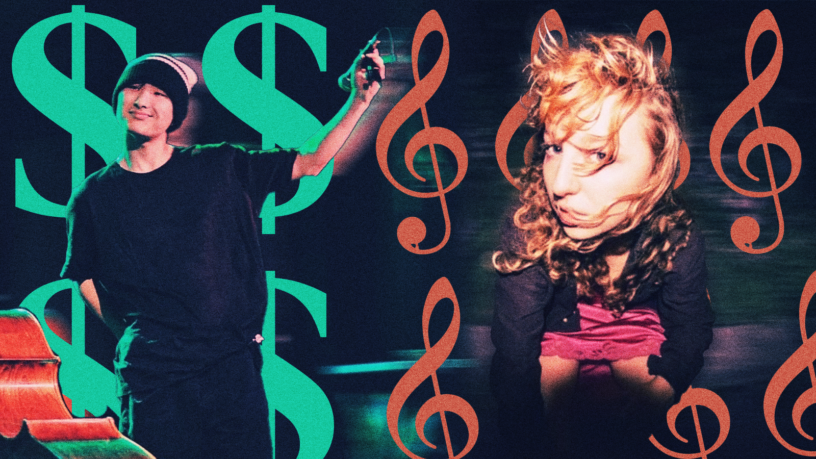By Yasmeen Shawish
Since the rise of music streaming services such as Spotify and Apple music in the 2010s, artists can publish music online with a few clicks of a button. The Eyeopener asked professional music students at Toronto Metropolitan University (TMU) about their experiences in the music industry and how they make money as young artists.
From streaming platforms and tour tickets to merchandise sales, musical artists have many different avenues to create a profit. But how can students turn their art into a viable business while in school?
Tae Hauk, a second-year professional music student at TMU, says he followed in the footsteps of his father and chose to pursue an education in music. Hauk says although music is still a really big industry, it can be very precarious as fewer people purchase music anymore and for smaller artists, ticket sales just aren’t quite the same.
“If you look at the stats, people are saying that live music is as big as it’s ever been…but it’s because people today, they go to stadium concerts and pay $10,000 for a ticket,” Hauk says. “But for smaller artists, it’s very difficult to make money from live music.”
Hauk states that, in his experience, he receives a very minuscule incentive from the number of plays a song has.
Charity Chan, a lecturer for concert and festival management at TMU, says most musical artists, when starting out, make their money from other streams of income that deal with their personal brand rather than ticket sales.
“Finding work and making a living as a musician was always about wearing a large number of hats,” Chan says. “If you wanted to make money from your music and from work, it required a lot of hustle because in most cases, you did not make money from your musical practice.”
She emphasizes that the only difference now is streaming services are another hat that musicians have to wear to make a living wage. Most streaming services have a very small pay-out so it is not an ideal main source of income, especially as a fresh artist who is just starting.
According to Spotify, artists can begin monetizing their content when they receive 1,000 streams from a minimum number of unique listeners in a 12-month period on a song. Titles with one to 1,000 annual streams generate $0.03 per month on average.
“Royalty payments that artists receive might vary according to differences in how their music is streamed or the agreements they have with labels or distributors,” says Spotify’s Track Monetization Eligibility guidelines.
Hauk believes there is a high number of streams an artist can achieve to make a livable wage, but that number in the six digits is not obtainable early in a career. Although, social media algorithms can boost content.
“Where I’m at now, I’m just not consistent enough in terms of a fan base. I’ve got really big on TikTok in September [2023] off of a song I didn’t even intend on releasing,” Hauk says. “[It’s] the right place, right time…which did translate into some form of revenue. But how long that’s going to last, I couldn’t really tell you. Is that going to be a consistent revenue source? I couldn’t really say.”
Chan says to maximize profit from streaming services is to build up an audience—find a niche and a virtual audience that will engage with an artist’s music.
“It’s about working with the algorithms that are used by these platforms to have people help discover more of your music…trying to figure out how you can get your music so that it is adjacent to something else people are interested in within a particular community,” Chan says.
Sydney Yack, a third-year student in the same program who performs under the name DAPHNE, says although streaming is not a huge money maker, there are still different outlets for emerging artists to find support.
“You need to find that community of people who will help you find other opportunities. You have to put yourself out there…there’s a bunch of programs for women in music, producers in music,” Yack says.
She highlighted the TD Music Artist in Residence, RBCxMusic Initiatives and the Honey Jam non-profit multicultural artist development programme as a few Canadian examples.
Yack also says she plans her music around the amount of releases to keep content flowing.
“Once you have something released and you don’t have anything after it, it is really difficult to get back on that horse and release something new.”
For Yack, she knows the creative industries are not an easy career to pursue successfully but it is all about the work you put it.
A word of advice she keeps hearing about the music industry: “If you’re not obsessed with it, you will fail.”
Hauk says his main goal is not the monetary compensation from making music, but each artists unique experience.
“[Making music] is not really about money…you just have to want it, you have to have a desire, you have to have a passion. And then the rest kind of figures itself out.”










Leave a Reply